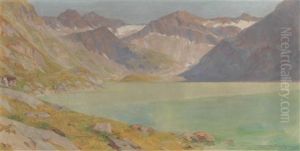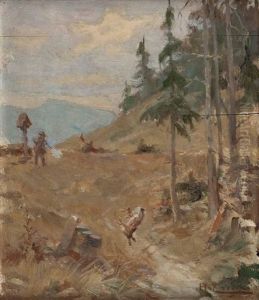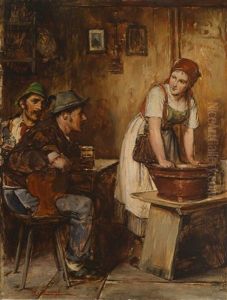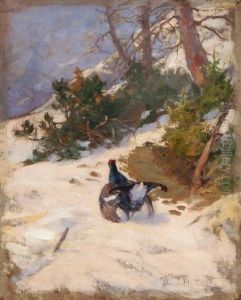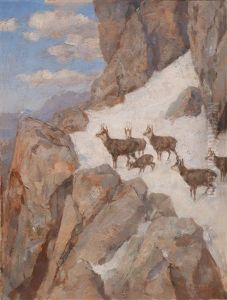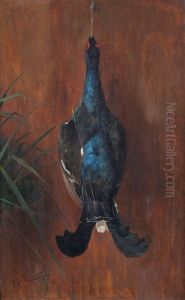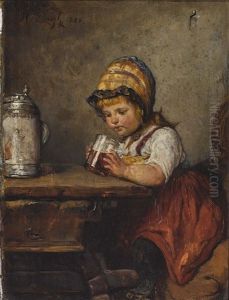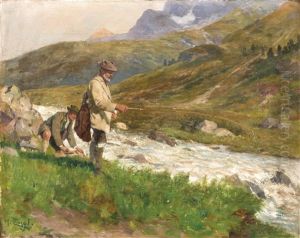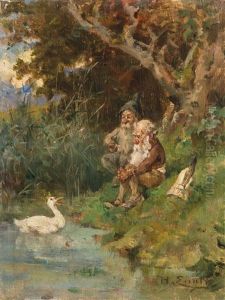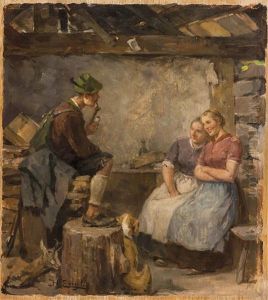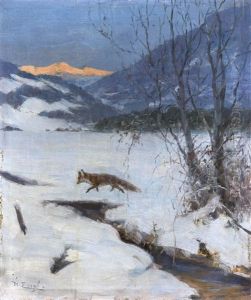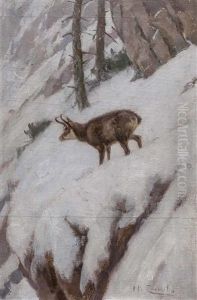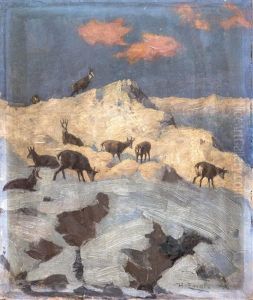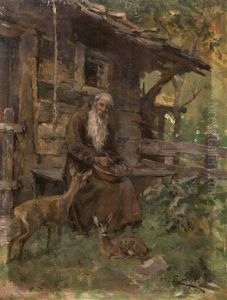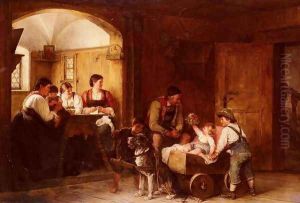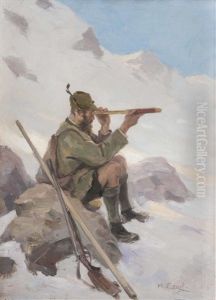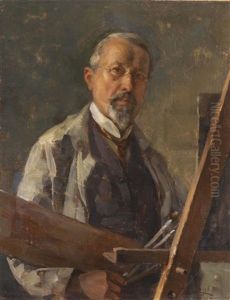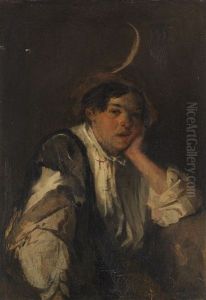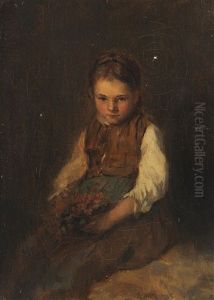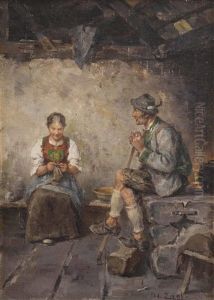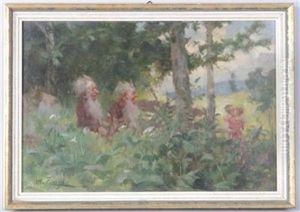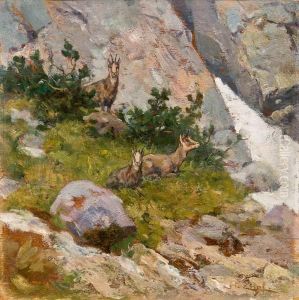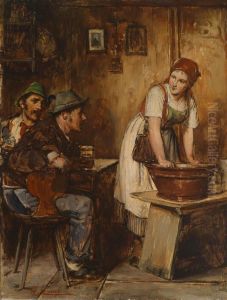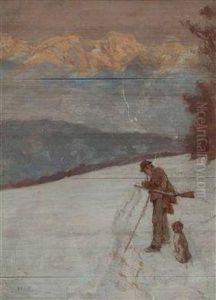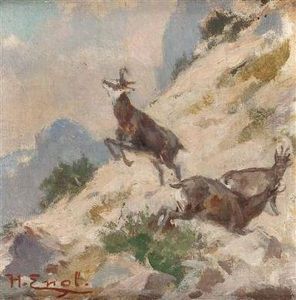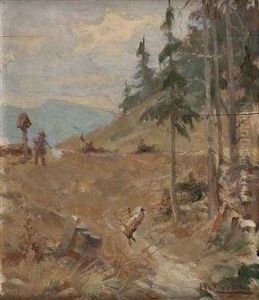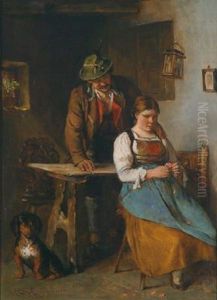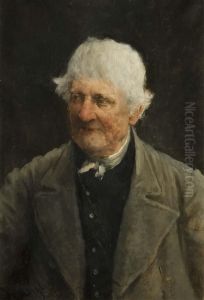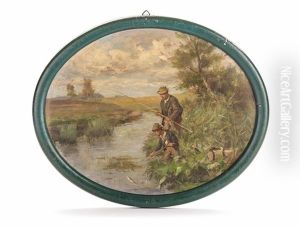Hugo Engl Paintings
Hugo Engl was an Austrian painter, known for his contributions to the art scene in the late 19th and early 20th centuries. Born in Innsbruck, Austria, in 1875, Engl pursued his artistic education at the Academy of Fine Arts Vienna, where he honed his skills and developed a distinct style that blended traditional techniques with emerging modernist trends.
Engl's work was primarily characterized by his landscape and genre paintings, which often depicted the natural beauty of the Austrian countryside and the everyday lives of its inhabitants. He was particularly adept at capturing the interplay of light and shadow, which added a sense of depth and realism to his compositions.
Throughout his career, Hugo Engl participated in numerous exhibitions and became well-respected within artistic circles. His paintings were appreciated for their vibrant colors and attention to detail, and they often elicited a sense of nostalgia for a simpler, rural way of life. Despite the rise of avant-garde movements during his time, Engl remained committed to his more traditional approach, which found a dedicated audience both in Austria and abroad.
Engl's legacy includes not only his contributions to Austrian art but also his influence on younger artists who sought to bridge the gap between the classical and modernist schools of thought. He continued to paint and exhibit his work until his death in 1935, leaving behind a rich body of work that continues to be studied and admired for its craftsmanship and evocative portrayal of Austrian culture and landscapes.
